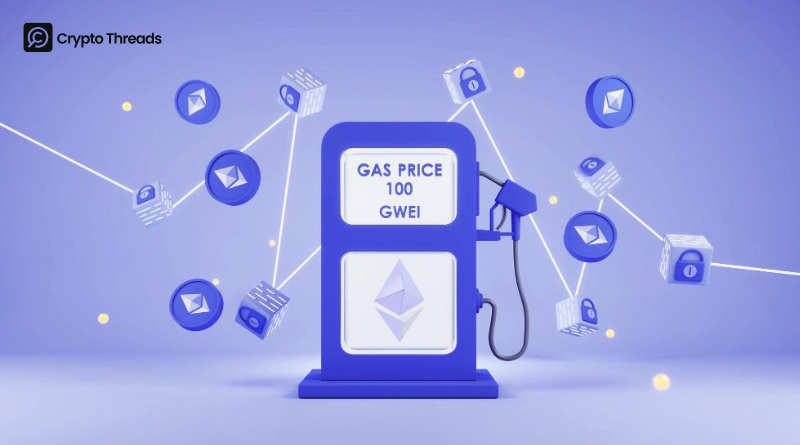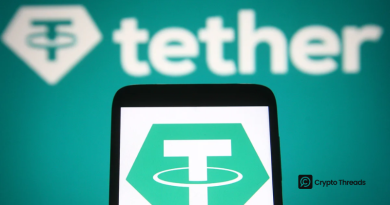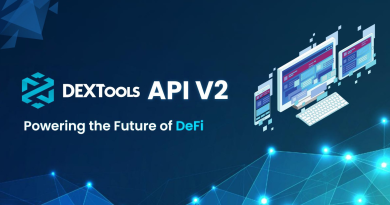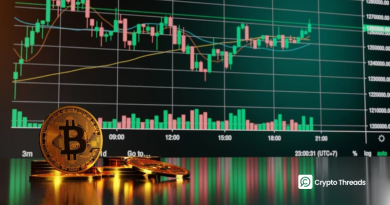Crypto Gas Fees Explained: Why Do You Pay in 2025?
Have you ever wondered why every time you send Bitcoin, swap Ethereum tokens, or mint an NFT, you are asked to pay a crypto gas fee? For many first-time users, it feels puzzling. If blockchain is meant to be decentralized and open, why should you pay extra just to move your own assets? In reality, crypto gas fees are the price of security and fairness in decentralized networks. They reward validators who keep the system safe, prevent spam that could overwhelm blockchains, and allocate scarce block space to those who value it most.
By 2025, this subject has become even more relevant. Ethereum now processes nearly two million transactions per day, Bitcoin’s activity has surged thanks to Ordinals, and low-cost blockchains like Solana handle tens of millions daily. Fees may vary from a fraction of a cent to tens of dollars, yet they all serve the same purpose: ensuring trustless systems continue to function. Understanding how gas fees work is no longer a minor detail, it is an essential part of navigating today’s crypto landscape.
What Crypto Gas Fees Really Are
Gas fees are the charges you pay to have your transaction processed on a blockchain. They are not arbitrary costs. Instead, they represent the payment given to validators (or miners, in Bitcoin’s case) who use their computing resources to record and secure your transaction on the network.
On Ethereum, this payment is calculated in units called gas. Think of gas as the fuel that powers every action on the blockchain. The more complicated the action, the more fuel it needs. For example, sending ETH from one wallet to another is a very simple action, so it requires only a small amount of gas. In contrast, minting an NFT or running a smart contract involves multiple steps of computation and therefore consumes much more gas.
The actual fee is determined by a simple formula:
Transaction Fee = Gas Units × Gas Price.
Gas units measure how much computational effort the action requires, while gas price tells you how much one unit of gas costs at that moment. Gas price is quoted in gwei, which is a tiny fraction of ETH (one gwei equals one billionth of an ETH).
To make this concrete, let’s look at an example: Sending ETH between wallets generally requires about 21,000 gas units. If the gas price is set at 15 gwei and ETH is trading at 1,900 dollars, the total cost of the transaction is roughly 60 cents. A more complex task such as minting an NFT may use 200,000 gas units or more. At the same gas price, that transaction would cost close to $9.50
If you think gas fees are random, you’re wrong. In fact, they are a direct reflection of how much work your transaction demands from the network and how busy the blockchain is at the time you send it.
Why We Have To Pay Gas Fees
Gas fees may seem like an annoyance at first glance, but they are actually the mechanism that keeps blockchains secure and functional. There are three main reasons why these fees exist, and each plays a vital role in sustaining the network.
The first is security. Validators on proof-of-stake blockchains such as Ethereum, or miners on proof-of-work chains like Bitcoin, dedicate real resources such as computing power, capital, and time, to process transactions and maintain consensus. Gas fees form part of their reward. Without this incentive, there would be little reason for anyone to contribute resources, and the network would quickly become vulnerable to spam transactions and malicious attacks. By charging fees, the system ensures that every participant has a reason to act honestly and keep the chain secure.
The second reason lies in resource management. Every action on a blockchain consumes something valuable: bandwidth to spread the transaction across the network, computational effort to execute it, and space within a block to store it permanently. Because block space is scarce, not every transaction can be included at once. Gas fees work as a filter, ensuring that only transactions which users consider meaningful enough to pay for will occupy this limited space. Without a cost attached, the network could easily be overwhelmed with frivolous or even harmful activity, making it unusable for genuine economic exchange.
The third reason is prioritization. When the blockchain is busy, not all transactions can be processed immediately. Gas fees act like a bidding system: users who attach a higher fee signal urgency, and their transactions are moved to the front of the line. Those who choose to pay less may still have their transactions confirmed, but they will likely wait longer, especially during periods of congestion. This dynamic allows time-sensitive activities, such as trades in decentralized finance or the minting of limited-edition NFTs, to be executed without delay while less urgent transfers follow afterward.
Taken together, these functions show that gas fees are not simply an extra charge added for no reason. They are the foundation of a fair and secure blockchain economy, aligning the interests of users with those of validators and ensuring that the system can continue to operate efficiently even under heavy demand.
How Crypto Gas Fees Differ Across Blockchains
Gas fees vary widely because each blockchain is built with different priorities. Some emphasize decentralization and security, others focus on speed and scale, and these choices directly affect what users pay.
On Ethereum, the fee system includes a base charge that is destroyed and a tip that goes to validators. This design reduces the supply of ETH over time while still rewarding those who secure the network. In July 2025, Ethereum processed around one and a half to nearly 2M transactions each day. Typical fees ranged between thirty to seventy cents, though during periods of intense activity such as NFT drops or DeFi liquidations, costs could still climb into double digits.
Bitcoin uses a simpler approach. Instead of measuring computational steps, it calculates fees by the size of the data. A transaction with more inputs or outputs takes up more space in a block and therefore costs more. In mid-2025, average Bitcoin fees hovered around $1 – $2, but they occasionally rose above that when the network became crowded, especially during waves of Ordinals inscriptions.
Some networks have designed themselves for extremely high throughput and minimal costs. Solana, for example, handles tens of millions of transactions every day while keeping the average fee below a tenth of a cent. Polygon, which connects to Ethereum as a scaling layer, consistently processes millions of transactions daily with costs well under a cent. Layer-2 solutions such as Arbitrum and Optimism take yet another approach: they group thousands of transactions together before recording them on Ethereum. This allows users to trade or interact with decentralized applications at a fraction of the main chain’s cost, usually between ten and fifty cents per transaction.
The differences become clearer when looking at the numbers side by side:
| Network | Daily Transactions | Average Fee | Peak Fee | Characteristics |
| Ethereum (main chain) | ~1.5–1.8 million | $0.36 – $0.75 | $40+ | Base fee burned, validators tipped |
| Bitcoin | ~550,000 | $1 – $2 | $30–50 | Fees depend on transaction size |
| Solana | Tens of millions | <$0.001 | <$0.05 | Very high throughput, ultra-low cost |
| Polygon | 10+ million | <$0.01 | ~$0.10 | Scaling layer with low fees |
| Arbitrum / Optimism | 2–3 million each | $0.10 – $0.50 | ~$1.50 | Rollups bundling transactions |
What emerges from this comparison is the link between design choices and user experience. Networks like Ethereum and Bitcoin can see fees rise sharply when demand spikes, while those optimized for throughput, such as Solana, Polygon, or Layer-2 rollups, are able to keep fees stable even when activity surges. For users, this means the same action can cost a few cents on one network and several dollars on another, depending on where it takes place.
To understand how gas fees actually behave, we can look at real events from July 2025. On July 18, a highly anticipated NFT mint on Ethereum highlighted the gap between simple and complex transactions. Early in the day, sending ETH cost only about $0.60–$0.80. But once the mint began, gas prices jumped above 80 gwei, and contracts that required close to 200,000 gas units pushed minting fees above $30, while a basic transfer at the same moment remained under $1.
Another example came from Bitcoin a few days later. Around July 22, a surge of Ordinals inscriptions filled the mempool and drove average fees above $40, with some users paying nearly $50 just to confirm a transaction. On calmer days that same week, the cost of sending BTC was closer to $1–$2. The transactions themselves had not changed; it was network congestion that transformed the user experience.
These cases show how complexity, timing, and demand combine to determine what users pay, often creating sharp contrasts within the same day or even the same hour.
What Drives Crypto Gas Fees Higher or Lower?
Gas fees may fluctuate from day to day, but they follow patterns that can be explained. At the core is congestion: every blockchain has a limit to how many transactions fit into a block. When traffic is light, costs stay low. But during busy moments, such as an NFT launch on Ethereum or a wave of Bitcoin inscriptions, users compete for the same block space, and fees rise as a result.
Another force is transaction complexity. A simple transfer requires little computation, while smart contract interactions, such as swaps or mints, demand multiple steps. Each step consumes resources, and the combined workload translates into higher fees.
Market prices also shape the outcome. Since gas is paid in native tokens, a rally in ETH, BTC, or SOL can make fees look more expensive in dollar terms even if network conditions stay the same.
Finally, protocol rules impose their own ceiling. For example, Ethereum caps block capacity at around 30 million gas units. When activity pushes against that ceiling, the system prioritizes higher-paying transactions, driving the effective price upward.
Seen together, these forces explain why one user might pay just a few cents while another, at the very same time, faces a fee of $30 or more.
Crypto Gas Fees Compared to Traditional Finance
While gas fees can seem frustrating, they remain competitive against traditional financial systems. International wire transfers typically cost $15 to $50 and take days to settle, whereas blockchain transactions clear in minutes for a fraction of that amount. Transparency also differs. In traditional finance, users rarely see the true breakdown of fees, while on-chain every payment is visible and traceable.
This comparison becomes clearer when laid out in direct terms:
| Aspect | Blockchain | Banks (TradFi) |
| Average Transfer Fee | $0.01 – $15 | $15 – $50 (international wire) |
| Speed | Seconds – minutes | Hours – days |
| Transparency | Fully visible on-chain | Hidden fees |
| Incentives | Validators/miners | Banks/clearinghouses |
Gas fees are more than just small charges on a transaction. They are what keep the system open, transparent, and free from any single authority deciding how money moves.
Gas Fees in 2025: Current Strategies and Future Outlook
Today, users already have several ways to keep gas fees under control, and more changes are on the way. The most effective short-term fix has been Layer-2 networks such as Arbitrum, Optimism, and Base. These systems group large batches of transactions off-chain and then settle them on Ethereum, which makes the cost per user far lower than sending everything directly on the mainnet.
And don’t forget, timing also matters. When network activity slows, typically during weekends or early UTC mornings, fees tend to drop. Some wallets now make it possible to combine several actions into one transaction, helping regular traders cut expenses further. For those unsure about when to send funds, tools like Etherscan’s Gas Tracker provide real-time fee estimates. On top of that, other blockchains such as Solana, Polygon, and Avalanche consistently offer cheaper transactions, which explains their popularity for small transfers, NFT drops, and gaming.
The push to reduce costs does not stop there. Ethereum’s long-term roadmap includes proto-danksharding (EIP-4844) and eventually full danksharding, both designed to expand block space and drive Layer-2 fees down to just a few cents. At the same time, cross-chain frameworks like Cosmos, Polkadot, and LayerZero are being built to spread activity across multiple networks, preventing congestion from piling up on a single chain. Together, these near-term solutions and future upgrades suggest a clear direction: blockchain transactions will become faster and cheaper, while still preserving the openness and security that define the system.
Conclusion
Gas fees are often viewed as a nuisance, yet they remain the mechanism that keeps blockchains secure and impartial. They filter out spam, reward validators, and preserve the neutrality of the system. Without them, decentralization would not function in practice.
By 2025, the experience of paying for gas has evolved. Layer-2 networks, sidechains, and alternative blockchains have driven costs down and improved speed, making blockchain use accessible to far more people. Still, volatility has not disappeared. An NFT drop or a wave of Bitcoin inscriptions can push fees sharply higher, reminding us that gas costs are shaped by demand and competition for limited block space rather than being static charges.
The path forward is not about removing gas fees altogether, but about making them stable, transparent, and low enough to support everyday activity. The industry is moving in that direction. For users, each fee paid carries a deeper meaning: it is the price of sovereignty in a financial system where control rests with the individual, not with banks or governments.



